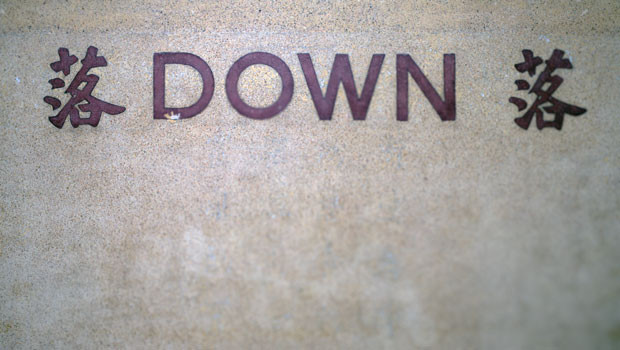Asia report: Hong Kong leads losses on mixed day for region

Asia-Pacific markets ended mixed on Tuesday as investors weighed fresh tariff threats from US president Donald Trump, with Hong Kong equities leading losses across the region.
Market participants were looking ahead to 2 April - the supposed date that Trump will impose ‘reciprocal tariffs’ on US trading partners - to see whether the charges will be as wide-ranging as feared.
“Chinese stocks experienced the largest declines in Asia, as local markets struggled to maintain the positive momentum generated by earlier expectations of reduced tariffs in April,” said TickMill market strategy partner Patrick Munnelly.
“A key index tracking Chinese tech stocks in Hong Kong dropped as much as 3.8%, marking its steepest fall in three weeks, with Alibaba Group and Xiaomi among the hardest hit.
“Recent trading in Chinese equities has been volatile, as investors grow increasingly cautious about corporate developments following a remarkable rally.”
Munnelly noted that global markets, anxious about the economic repercussions of a severe trade conflict, found some relief from indications that the upcoming US tariff measures could be more targeted than the broad threats previously issued by president Trump.
“Xiaomi, based in Beijing, saw its shares tumble by as much as 6.6% after announcing a fundraising initiative involving the sale of shares at a discount.
“The stock had surged over threefold from a low in August, making it the top performer on Hong Kong’s Hang Seng Index.
“Alibaba fell by over 3% after its chairman cautioned about a potential bubble in data centre construction.”
Markets mixed across region, with Hong Kong leading the losers
Hong Kong's Hang Seng Index slumped 2.35% to 23,344.25, dragged lower by sharp declines in major technology names.
Sunny Optical plunged 10.05%, while BYD Electronic and Xiaomi dropped 9.58% and 6.32%, respectively.
BYD’s selloff came despite a strong earnings report showing a 73.1% year-on-year jump in fourth-quarter net profit to CNY 15bn (£1.6bn), with annual revenue surpassing Tesla’s for the first time.
Xiaomi shares also tumbled following the announcement of a $5.5bn upsized share sale to fund its electric vehicle expansion.
Mainland Chinese stocks were relatively stable - the Shanghai Composite was flat at 3,369.98, while the Shenzhen Component slipped 0.43% to 10,649.08.
Losses were concentrated among mid-sized industrial names, with HangZhou Iron & Steel, Nanjing Canatal Data Centre Environmental Tech, and Guangdong Rongtai Industry all dropping over 10%.
Japan’s Nikkei 225 rose 0.46% to close at 37,780.54, supported by gains in tech and real estate stocks.
Nexon surged 9.02%, Mitsubishi Estate advanced 4.81%, and DeNA climbed 3.71%.
The broader Topix added 0.24% to 2,797.52.
South Korea’s Kospi 100 fell 0.59% to 2,648.28, weighed down by losses in the industrial and steel sectors.
Hyundai-Rotem slid 8.82%, Hyundai Steel dropped 6.95%, and Posco Daewoo declined 6.82%.
Australian equities edged up, with the S&P/ASX 200 gaining 0.07% to 7,942.50.
Gold Road Resources led gains in Sydney with a 13.88% jump, followed by Clinuvel Pharmaceuticals and Wisetech Global.
In New Zealand, the S&P/NZX 50 rose 0.46% to 12,184.51, boosted by strength in Pacific Edge, Spark New Zealand, and Tourism Holdings.
In currency markets, the dollar was last 0.16% weaker on the yen, trading at JPY 150.46, as it lost 0.2% against the Aussie to AUD 1.5877.
The greenback was, however, 0.07% stronger on the Kiwi, changing hands at NZD 1.7471.
Oil prices were higher, with Brent crude futures last up 0.67% on ICE at $73.49 per barrel, and the NYMEX quote for West Texas Intermediate ahead 0.68% at $69.58.
Bank of Japan signals ongoing tightening trajectory in latest minutes
In economic news, Japan's central bank signalled a continued path of monetary tightening, with minutes from its recent meeting showing support for further interest rate hikes if inflation and economic conditions evolved as expected.
One Bank of Japan board member noted that real interest rates remained deeply negative even after the latest policy rate hike, underscoring the need for additional tightening to narrow the gap.
Several members also highlighted rising inflation risks, with the balance of price pressures now tilted to the upside.
The BoJ's most recent forecast, issued in January, projected core inflation at 2.4% and GDP growth at 1.1% for the year.
Governor Kazuo Ueda reaffirmed on Monday that the central bank would continue to raise rates if inflation stayed on a sustained path toward its 2% target.
He acknowledged the impact of rising bond yields but maintained that monetary policy adjustments would proceed if justified by underlying inflation trends.
Japanese government bond yields rose in response to the hawkish signals.
The five-year yield climbed to 1.165%, its highest level since October 2008, while the 10-year yield rose over three basis points to 1.575%, hovering near 16-year highs.
The 30-year yield was largely unchanged at 2.601%.
Reporting by Josh White for Sharecast.com.